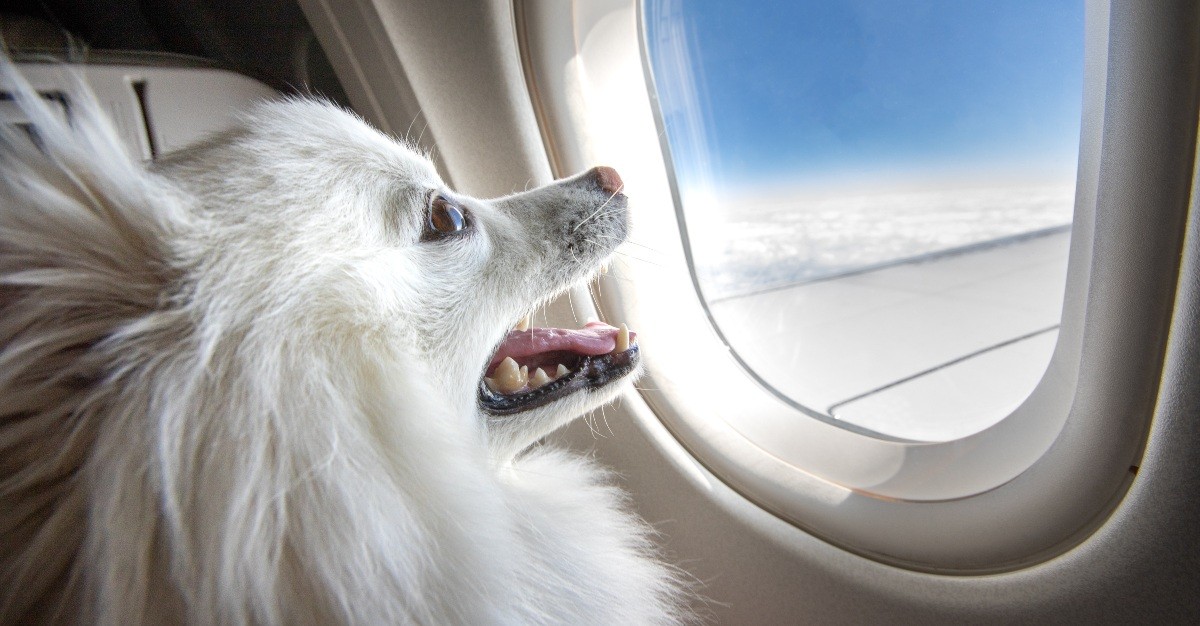 Before taking your pet abroad, make sure to get all the necessary documents.
Before taking your pet abroad, make sure to get all the necessary documents.
Planning a trip and thinking of bringing your furry, scaled, or feathered friend along? You’re not alone. More and more pet owners are choosing to travel with their beloved companions, ditching expensive kennels and pet-sitters for the joy of shared adventures. While you’re probably well aware of your own passport needs, you might be wondering, “Can Pets Get Passports too?” The answer isn’t as simple as a booklet with paw prints, but yes, in a way, pets do need their own set of “passports” or travel documents to journey internationally and even domestically in certain situations.
In the United States, the term “pet passport” isn’t a formal, official document issued by the government like a human passport. Instead, it’s a colloquial term referring to the collection of health and identification documents required for your pet to travel across borders. Think of it as your pet’s travel portfolio, ensuring their health and safety, and compliance with regulations of both your departure and arrival destinations. These regulations are in place to protect animal and public health, and understanding them is crucial for stress-free travel with your pet.
So, what exactly constitutes this “pet passport,” and what documents will you need to ensure smooth travels with your animal companion? Let’s break down the essential paperwork for pet travel.
Essential Documents for Your Pet’s “Passport”
Traveling with a pet involves more than just packing their favorite toys. It requires careful preparation and gathering specific documents to meet legal and airline requirements. Here are the core components of what’s commonly referred to as a pet passport in the US:
Rabies Vaccination Certificate: A Must-Have for Pet Travel
Rabies is a serious and deadly disease for both humans and animals. Therefore, proof of rabies vaccination is almost universally required for pet travel. Many countries and even some states have strict rules regarding rabies vaccinations for dogs, cats, and ferrets, especially those over three months old. Typically, vaccinations must be administered at least 30 days prior to travel. It’s vital to verify the specific requirements for both your departure location and your destination well in advance of your trip, as the validity period of rabies vaccinations can vary. Ensure your pet’s vaccination is up-to-date and properly documented by a licensed veterinarian.
Certificate of Veterinary Inspection (CVI): Your Pet’s Health Record for Travel
A Certificate of Veterinary Inspection, often called a health certificate, is a crucial document for pet travel. This is an official document signed by a USDA-accredited veterinarian after examining your pet. The CVI confirms that your pet is healthy, disease-free, and fit for travel. It essentially states that a qualified vet has inspected your animal and found them to be in good health and not showing signs of communicable diseases. CVIs are typically only valid for a limited time, usually around 10 days, so timing your vet visit close to your travel date is important. Always check the specific validity period required by your destination to ensure your CVI remains current throughout your journey.
Acclimation Certificate: Considering Extreme Temperatures
Depending on the airline and the time of year you are traveling, an Acclimation Certificate might be necessary. This document addresses regulations concerning your pet’s exposure to extreme temperatures, both hot and cold, while waiting to be loaded onto the plane and during the flight itself, especially if they are traveling in cargo. Airlines have specific policies to ensure the safety and comfort of animals during temperature extremes. Contact your airline directly to determine if an Acclimation Certificate is required for your pet’s travel plan, particularly if you are traveling during summer or winter months or to locations with significant temperature variations.
Other Potential Pet Travel Documents
Depending on your specific destination and airline, you might encounter requirements for additional documents. These could include:
- Feeding Confirmation: Confirmation that your pet has been provided with food and water within a certain timeframe before the flight.
- Live Animal Checklist: A form providing instructions for airline handlers on how to care for your pet during transit.
- Tranquilizer Consent Forms: If you plan to use tranquilizers for your pet during travel, a consent form from your veterinarian might be required. However, it’s generally recommended to avoid tranquilizing pets for air travel unless medically necessary and under veterinary guidance, as it can sometimes pose health risks at altitude.
Airline-Specific Pet Travel Policies
When flying with your pet, it’s essential to understand that airlines have their own specific rules and regulations regarding animal transport. Generally, airlines offer a few options for pet travel:
- In-cabin: Smaller pets that fit in airline-approved carriers can often travel in the cabin with you as carry-on baggage, subject to fees and size restrictions.
- As cargo: Larger pets or breeds not permitted in the cabin typically travel in the cargo hold, which is a pressurized and temperature-controlled area of the plane. This is also considered excess baggage or accompanied cargo, and fees apply.
- Separate Cargo: You can also book your pet on a separate flight as cargo. This is generally more expensive than accompanied cargo and is often used for transporting animals without their owners on the same flight.
It’s crucial to research and contact your chosen airline well in advance to understand their specific pet policies, breed restrictions (some airlines, like United, have restrictions on certain breeds), carrier requirements, and any associated fees. Some airlines may also have health restrictions, especially for brachycephalic (short-nosed) breeds, which can be more susceptible to breathing problems at altitude.
For a smoother, more hands-off approach, you can also consider using a licensed commercial pet shipper. These specialized services handle all aspects of pet air travel, from documentation to logistics, acting as a third party to manage the complexities of pet transport. While they add an extra cost, they can significantly reduce stress and ensure your pet’s safe and comfortable journey, especially for international or complicated travel itineraries.
Preparing for Your Pet’s Journey
Traveling with your pet requires careful planning and preparation. Understanding the necessary documents, airline policies, and health requirements is key to a successful and stress-free trip for both you and your animal companion. While “pet passports” in the US context are collections of documents rather than a single booklet, gathering and organizing these papers is just as crucial as having your own passport ready when you travel internationally. By being proactive and informed, you can ensure your pet’s travel documents are in order, paving the way for wonderful adventures together.
For more detailed information and resources on pet travel, always consult official government websites of your departure and destination countries, as well as the websites of the airlines you plan to use. And remember to consult with your veterinarian to ensure your pet is healthy and ready for travel!

